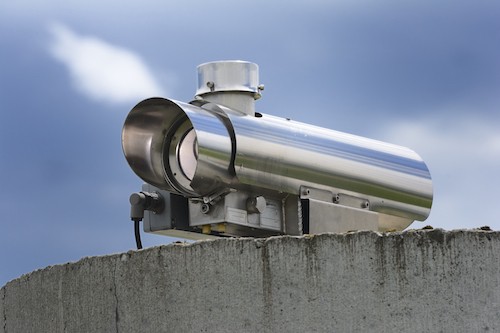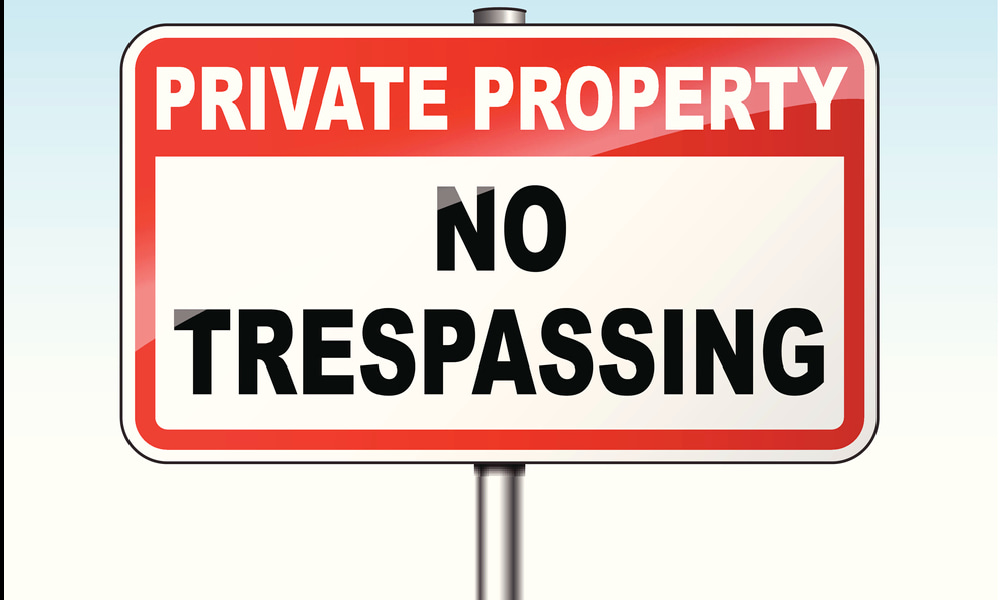Using protective lighting is a practical, cost-effective way to add a layer of security to your overall security strategy.
Protective lighting delivers increased visibility for risk scenarios as well as the optimal visibility for security functions like video surveillance and guard duties.
This article covers the basics of protective lighting: do’s, don’ts and industry definitions. Plus, we’ll cover several additional security strategies you can use to create the best facility security plan in your power.

The Basics of Protective Lighting
Protective lighting, or security lighting systems, generally go by the same name. Certain types, like emergency lighting and moveable lighting, may be used in very specific cases. But they all have a common goal of keeping your facility secure.
When you are choosing protective lighting for your facility, realize that lighting is highly dependent on the scenario.
It’s true that the protective lighting strategy you choose will depend on your operations, location, and unique threats. However, there are some basic principles of protective lighting to keep in mind.
Key Principles of Protective Lighting
- Make it easier for security to observe the site
- Make it difficult for security to be seen
- Protective lighting requires less intensity than working light
- Consider whether the background you need to illuminate is dark or light
- Use contrast to make intruders stand out
- Light perimeters and boundaries
- Light structures and internal areas
- Combine lighting strategies with alarm systems and protective services
- Ensure the failure of one light won’t result in system failure
Types of Protective Lighting Strategies
There are seven main types of protective lighting. You should be familiar with most of them, if not all. Combine some of these styles depending on the area to be protected.
1. Standby lighting
Standby lighting uses stationary lights arranged to flood light on an area. But rather than constantly illuminating the area, the lights are set to turn on and off using a built-in timer system or motion-activated sensor controls.
2. Continuous lighting
Continuous lighting is the most common type of protective lighting. This involves arranging lights to illuminate an area from dusk to dawn. Rather than using motion sensors or other controls, the lights stay on continuously, preventing the area from ever being partly or fully dark. This is especially used in outdoor security lighting.
3. Emergency lighting
Emergency lighting is generally used as a backup in case of standard lighting failure. Emergency lighting systems may be the same as any of the above. They simply operate as duplicates of other systems during times of emergency such as power failure. These mainly rely on alternative power sources like backup generators or batteries.
4. Moveable lighting
This type of lighting can be stationary or portable. Moveable lighting is most commonly used as searchlights. Moveable lighting systems may be manual or computer-operated and are mostly used to supplement continuous or standby lighting situations.
5. Controlled lighting
Controlled lighting is one strategy of continuous lighting. This type of protective lighting limits the projection of light to illuminate a limited area outside a perimeter.
6. Surface method lighting
Always with surface lighting, the goal is to illuminate the surface of structures and/or buildings. This method is particularly favorable to residential areas.
7. Area lighting
Area lighting is just that – lighting designed to illuminate large areas. It’s typically found in open areas such as parking lots, but “area lighting” is a very broad term that may refer to lighting for any specific location.
If you are looking for more specific lighting standards, you can check out our referenced resource at Electrical Construction & Maintenance Magazine online. The article we’ve referenced here includes illumination details for protecting various areas including open yards, storage spaces, and piers and decks.
Supplementing Your Protective Lighting Strategies
It’s important to remember that protective lighting alone, while effective, is not a complete solution. Whether you’re managing, planning, or updating a protective lighting system, consider:
- One-size-fits-all never works
- You may not need lighting where certain alarm systems are already in place
- Complexity does not equal better security
- Protective lighting is not enough on its own

Implement Alarm Systems
From access control alarm systems to temperature detection alarm systems, the innovations in alarm systems make it so there is an alarm to fit every need. You can choose on-site alarms only, or add alarm systems that alert your local law enforcement for backup.
Hire Security Guards
Whether you need short-term service or a long-term strategy, you should consider security guards as part of your security strategy. While professional security officers are often considered cost-prohibitive, such is not always the case. You can now hire off-duty and prior-police security – armed or unarmed – for a very cost-effective price from a local security company.
Use Video Surveillance
Few operations go without surveillance cameras these days. And for good reason – video cameras deter crime, and footage from cameras helps you catch illegal activity. Many rely on passive surveillance, though. When you’re not on-site, you need active surveillance.
For large, remote, or harsh facilities like warehouses, scrap yards, and utility sites, consider remote video security surveillance. Also a cost-effective addition to your current security efforts, remote monitoring delivers a host of benefits:
- With mobile surveillance camera units provide a 360-degree view
- Mobile surveillance trailers are built to deploy instantly and withstand harsh conditions
- Remote security professionals provide real-time response with eyes on-site
- Stored footage protects you against legal or insurance liabilities

Contact Mobile Video Guard to Protect Your Facility with Remote Monitored Surveillance
Mobile Video Guard delivers specialized mobile remote surveillance solutions to facilities and operations across Maryland, DC, and Virginia. If you’re interested in protecting your business with the best remote video camera surveillance option in the Chesapeake Bay region, please contact us today for a free quote.
And if you need additional site security immediately, that’s no problem either. Just reach out online or by phone at 844-722-5486 and one of our surveillance systems specialists will be in touch with you ASAP. We are able to provide on-site surveillance faster than most – sometimes within one business day.




